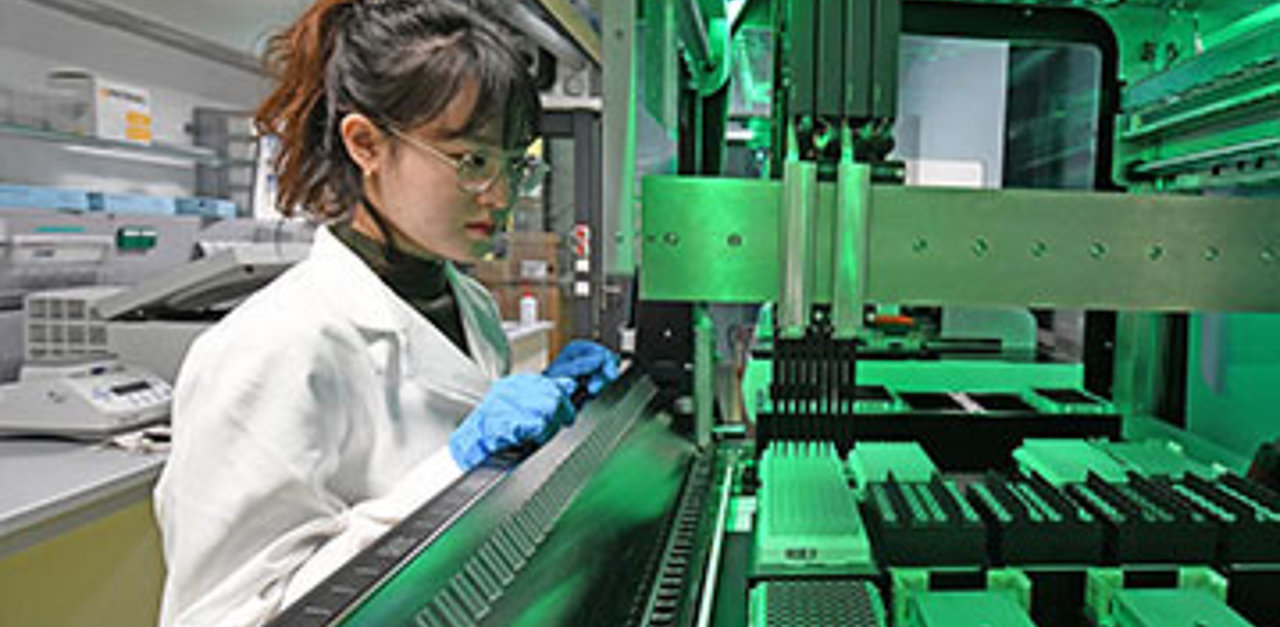Juyeon Park wants to understand the fundamental links between physical processes and biological phenomena. Having studied Biology and Physics in her native South Korea, she is now doing a practical with the Broadband Infrared Diagnostics (BIRD) group at the Laboratory for Attosecond Physics (LAP). BIRD’s members are developing a laser-based method for the diagnosis of cancers.
Juyeon speaks with quiet intensity, and observes the world around her with bright, attentive eyes. “I would like to understand how physics can help us to obtain a better understanding of the human body,” she says. This is a goal she shares with the scientists involved in the BIRD project at the LAP. BIRD is an interdisciplinary research project which is exploring how laser technology could be employed as the basis for the non-invasive diagnosis of cancers – prior to the appearance of overt symptoms. The basic idea is the following. The laser emits infrared light, causing the diverse molecules in a blood sample to vibrate at characteristic frequencies. Because of the resulting absorption at these specific frequencies, the spectrum of the transmitted light differs from that of the initial beam. Hence, the transmitted spectrum can serve as a fingerprint that provides information about the chemical structures of the molecules found in the sample donor’s bloodstream. Since most of these molecules are derived from cellular metabolism, they essentially provide a picture of the donor’s state of health. Thus, alterations in the products of cellular metabolism owing to pre-cancerous changes in cell metabolism should also be detectable with this approach.
The physicists, biologists and data scientists on the BIRD team are now engaged in turning this idea into a practicable diagnostic tool, and Juyeon is now part of that team. One of her tasks is to measure the concentrations of known substances by means of absorption spectroscopy, using mixtures of 26 different proteins whose individual concentrations are known. By analysing the spectra of these mixtures mathematically, one can identify the spectroscopic signatures specific to their individual components. She can also use this method to establish the lowest concentration of each protein that the spectrometer can detect.
Juyeon is also examining blood samples obtained from patients with lung cancer with the aid of infrared spectroscopy. She can compare these spectra with the donor’s condition at the time when the blood sample was taken. In this way, it should be possible to detect correlations between the features of the spectra, such as the intensities of specific absorption lines, and the state of the tumour. “This is the first time that I have experienced directly how laser physics can provide insights into the complex world of biology,” she says.
Juyeon has always been fascinated by the workings of nature. She grew up in the province of Gyeonggi-do, which is located south of Seoul. As a child, she began to wonder about the variations in the local climate. “I wanted to understand why the temperatures changed from one season to the next, and why the winds varied in direction and speed,” Juyeon recalls. “It all appeared inexplicable to me, and somehow that aroused my curiosity.” But what interested her even more than the weather was the extraordinary complexity of the human body. She therefore chose to major in biology at Ewha Women‘s University in Seoul, and subsequently developed a strong interest in physics. “After all, the body is a physical entity, and physics is the fundamental basis of biology.” Furthermore, advances in physics have led to high-precision methodologies that enable us to gain a better understanding of how the body works – and this is what brought Juyeon to Garching. Her practical, which is financially supported by the Max Planck Postech/Korea Research Initiative in South Korea and the Max Planck Institute for Quantum Optics, continues until autumn 2019.
This is Juyeon’s first visit to Germany, and her life here is rather different from her daily round at home. “Garching is very quiet – at least by comparison with the noise and the bustling crowds in Seoul, in which I am regularly swallowed up on my way to university,” she explains. On the Garching Research Campus and in the meadows along the banks of the Isar, she finds it easy to concentrate on her work. “It’s so peaceful here and the air quality is very good.” She also appreciated the stillness and the broad vistas of the Bavarian Alps, which she visited during the Easter holidays. When she takes a break from research and mulling over data, Juyeon seeks tranquillity in yoga. “I’m also taking a German language course at LMU – but I find the pronunciation of German incredibly difficult,” she admits with a wry smile. Juyeon plans to continue her studies, and looks forward to delving deeper into the connections between physics and the living world.
